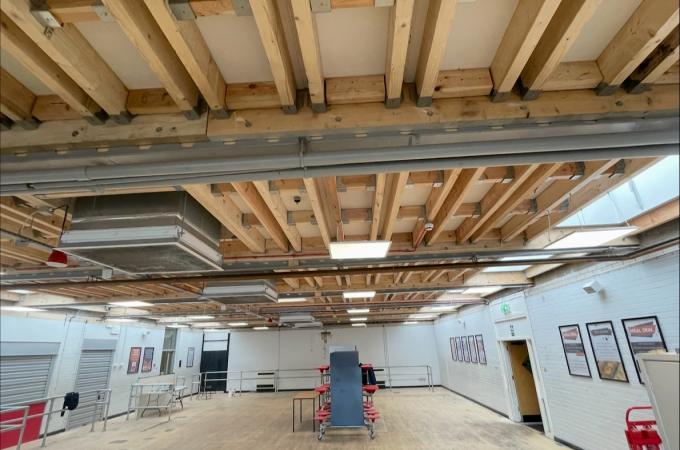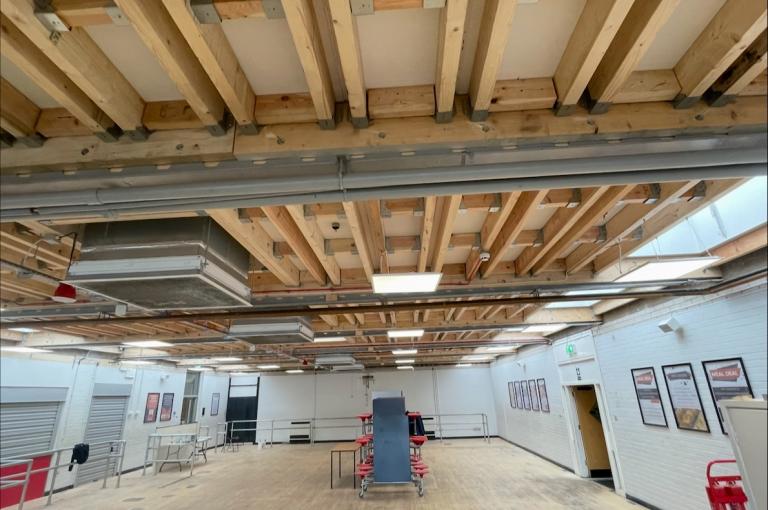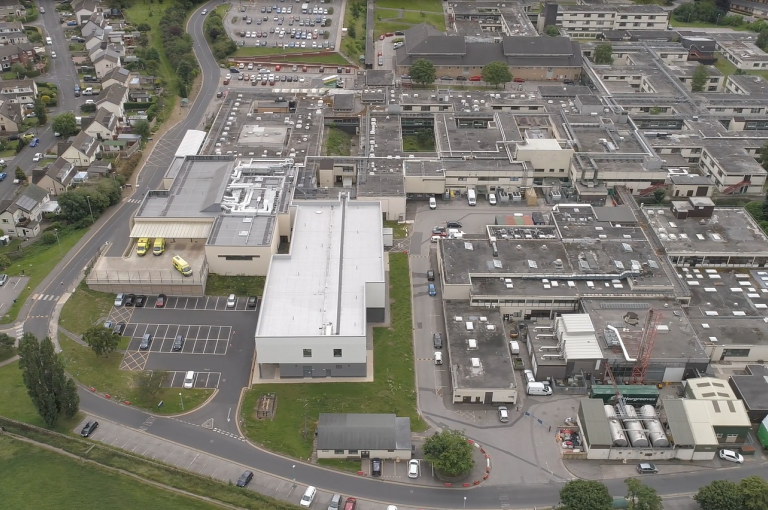RAAC Concrete Repair by Robertson Construction
At Robertson Construction, we have carried out many RAAC concrete repairs in a variety of different sectors. One of our current projects is a modern redevelopment of the maternity and woman’s health ward in the Royal Bolton Hospital, in 2023 RAAC was identified within the unit. Work is being conducted in phases to ensure services remain operational throughout the refurbishment. Completion is expected in early 2027.
As a structural repairs contractor, Robertson are focused on finding alternative methods of repairing RAAC, for example in March 2025 our North West business completed the rebuilding works at Bramhall High School to either strengthen or remove RAAC panels from the building. This project involved the supply and installation of fail-safe timber supports for RAAC planks as well as overseeing other contractors working on behalf of Stockport council.
Key facts about Royal Bolton Hospital project:
£38 million
redevelopment
62 bed
maternity suite
3 fully
functioning theatres
What is RAAC?
RAAC is a lightweight construction material that was widely used from the 1950s through the 1990s, primarily in flat roofs, but also in some walls and floors.
It gained popularity as a cost-effective and easy-to-install alternative to traditional concrete, with faster manufacturing times. The material is aerated, filled with small air pockets, giving it a texture similar to that of an Aero chocolate bar.
However, RAAC has notable drawbacks. It is not as strong or long-lasting as conventional concrete, typically having a service life of around 30 years. Its structural performance differs considerably from standard reinforced concrete. One major vulnerability is its tendency to absorb moisture due to its porous nature.
When moisture penetrates the material, it can reach the internal steel reinforcement, causing corrosion and weakening the structure. To mitigate this, RAAC panels especially those used in roofing are often protected with coatings like bitumen. Still, these protective layers can deteriorate over time.
How to identify RAAC concrete
- Visual Clues: RAAC is usually found in panel form, measuring approximately 450-600mm in width and 2.4-3 meters in length. The outer surface is smooth, but the interior shows a porous, bubbly structure created by trapped air.
- Texture: Unlike standard concrete, RAAC feels lighter and softer. It can often be marked or indented using a pointed object such as a screwdriver.
- Weight: One of RAAC’s key identifiers is its noticeably lighter weight when compared to conventional concrete materials.
- Edge Features: Many RAAC panels have chamfered or bevelled edges, which can help distinguish them from other concrete types.
If you think RAAC may be present in a structure, it’s important to seek expert advice for proper evaluation and safety checks.




